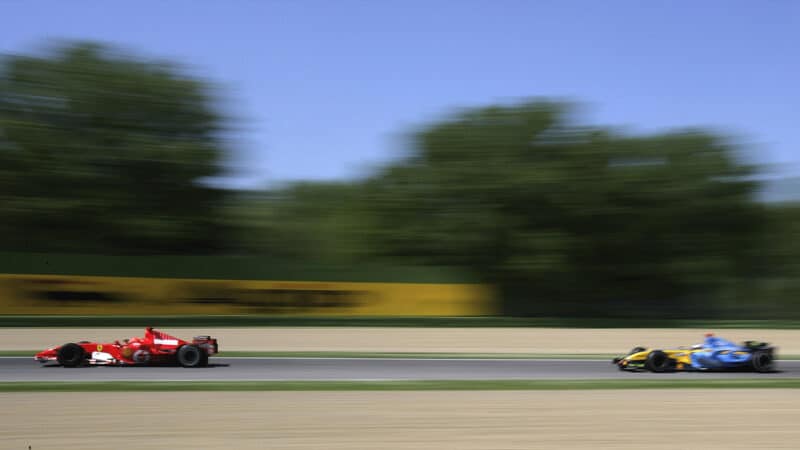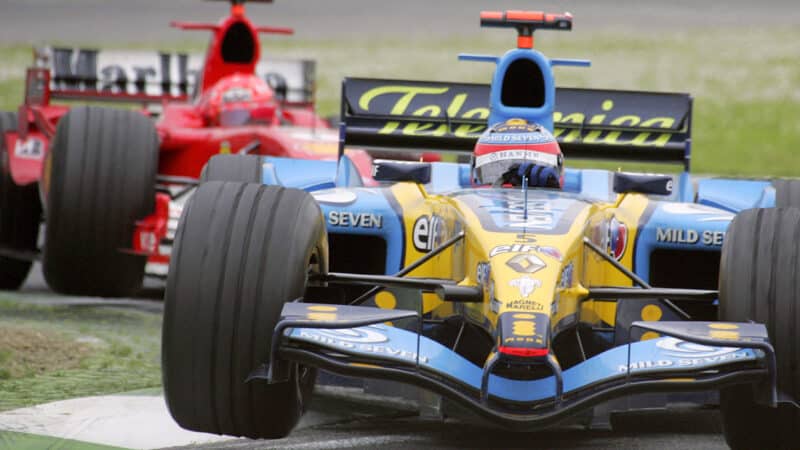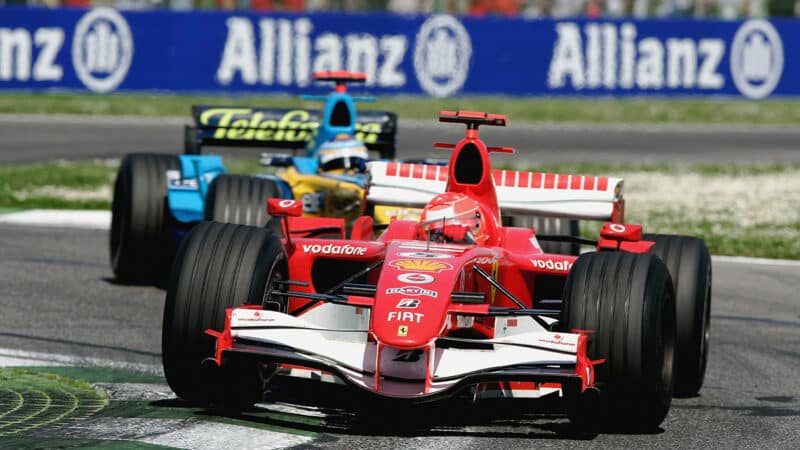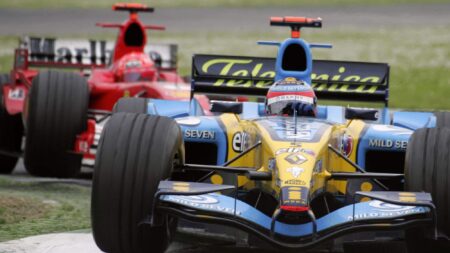Alonso recently talked about his 2005 victory, saying that he felt relatively calm despite the intensity of the dice because he knew he only really had to cover the Tosa braking area. That’s no longer the real battle zone. It’s now about getting close enough in that DRS detection point just after a fast chicane, which if you manage it will likely allow you to breeze effortlessly past before Tamburello. Except Norris couldn’t quite get there, just as Schumacher couldn’t quite get down Alonso’s inside into Tosa.
One thing all three races have in common is that the leader – Alonso in 2005, Schumacher in 2006 and Verstappen last weekend – were suffering tyre dramas late in the race. Front graining was the problem Alonso (in ’05) and Schumacher (in ’06) were contending with as their rival hunted them down on much healthier rubber. Last weekend Verstappen simply wore out his fronts, partly as a consequence of Red Bull’s set up dramas earlier in the weekend. With the tread wearing away, the temperatures dropped and there was no bringing them back.
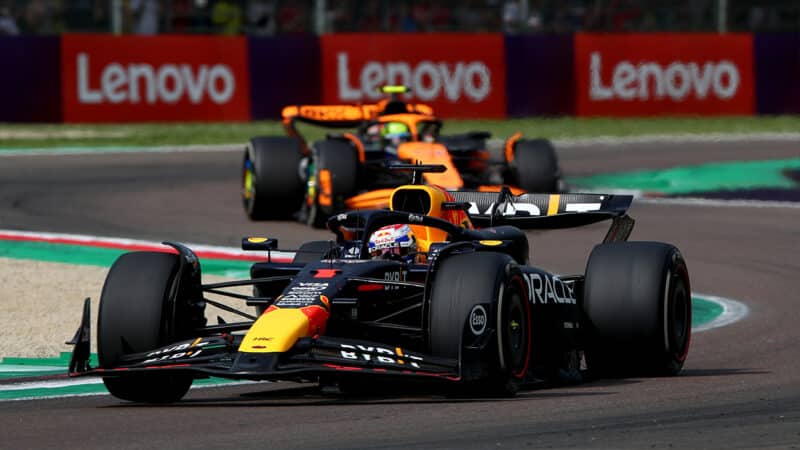
Norris in pursuit of Verstappen at Imola
Joe Portlock/F1 via Getty Images
So, what do we take from all this? The combination of the slower car being ahead and a track on which overtaking is difficult can be the recipe for a vintage race. On a circuit where passing is more feasible, once the leader had hit tyre trouble, the chaser would simply have caught and overtaken in very quick order. There may have been a few seconds of wheel-to-wheel action as the leader fought the inevitable. Instead we got lap after lap of not knowing how the battle would be settled. The other thing we learned is that the circuit is way more dominant than the cars, as even cars with radically different traits produced the essentially the same race in the same situation.
There are always those insisting things were way better in the old days and sometimes they were. But Imola? It’s pretty much like it ever was.

